Ultimate Guide to Ortholinear Keyboards
Learn about the benefits of an ortholinear keyboard, and how to make the switch with this comprehensive guide
What is an Ortholinear Keyboard and How Does it Differ from a Traditional Keyboard?
Ortholinear keyboards don’t have all the standard keys of a regular keyboard. The biggest difference is that traditional keyboards are laid out in a staggered fashion, while an ortholinear keyboard has all the keys in a straight row. This means that the user’s hands never have to leave the home row in order to type.
These ortho keyboards are also customizable, meaning that they can be tailored to your needs and preferences. For this reason, many ortholinear keyboards are the smaller 40% keyboard size. They utilize a key layer system where you hold down a layer key to access different key strokes depending what layer you are on. For example, the first layer would serve as your alpha keys while the second layer might be custom shortcuts for Photoshop.
The grid layout makes the keyboard faster to type on because you don't have to move your hands as much while scrolling through symbols. This also takes a bit of remembering the different shortcuts and has a higher learning curve.
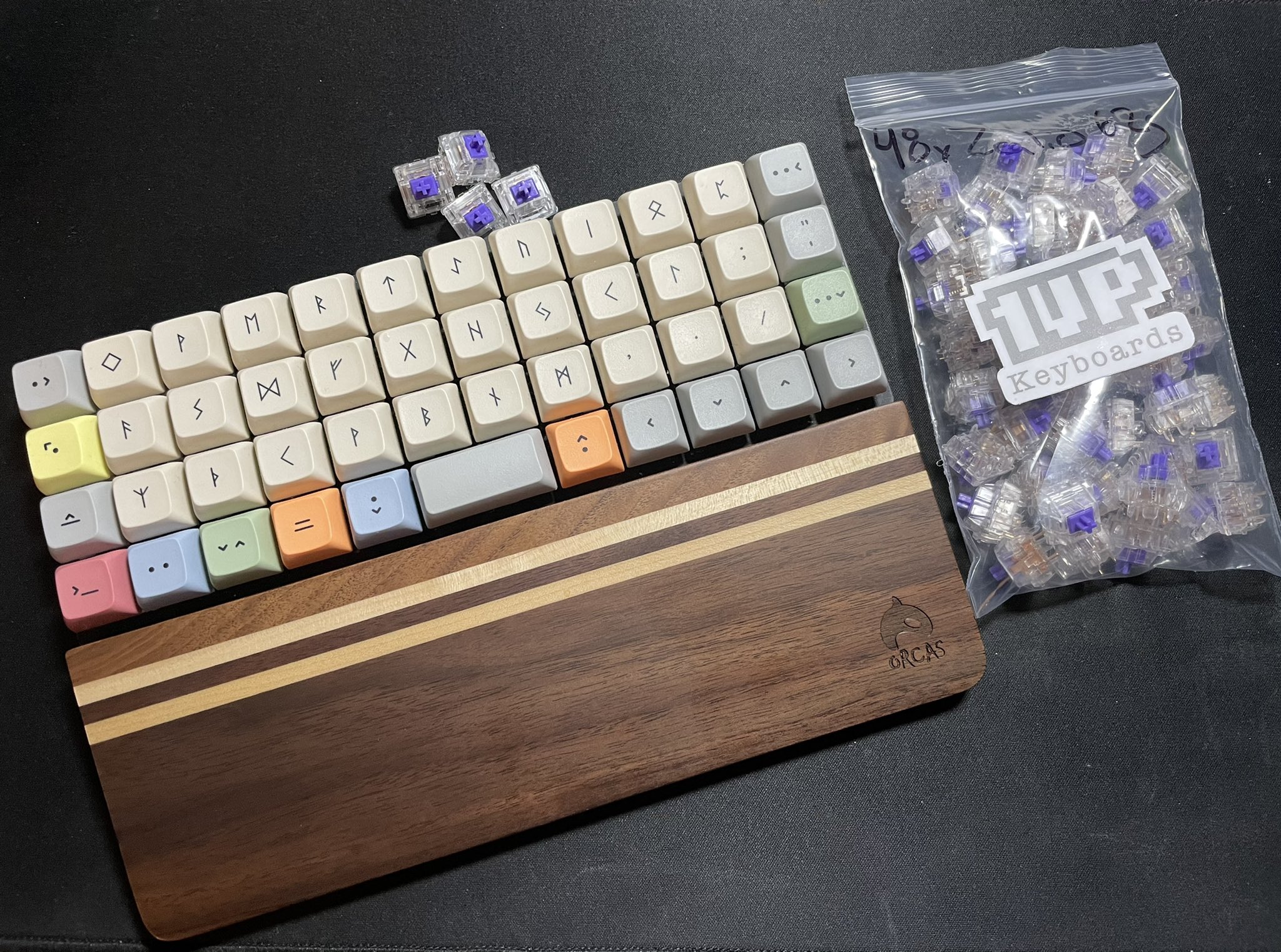
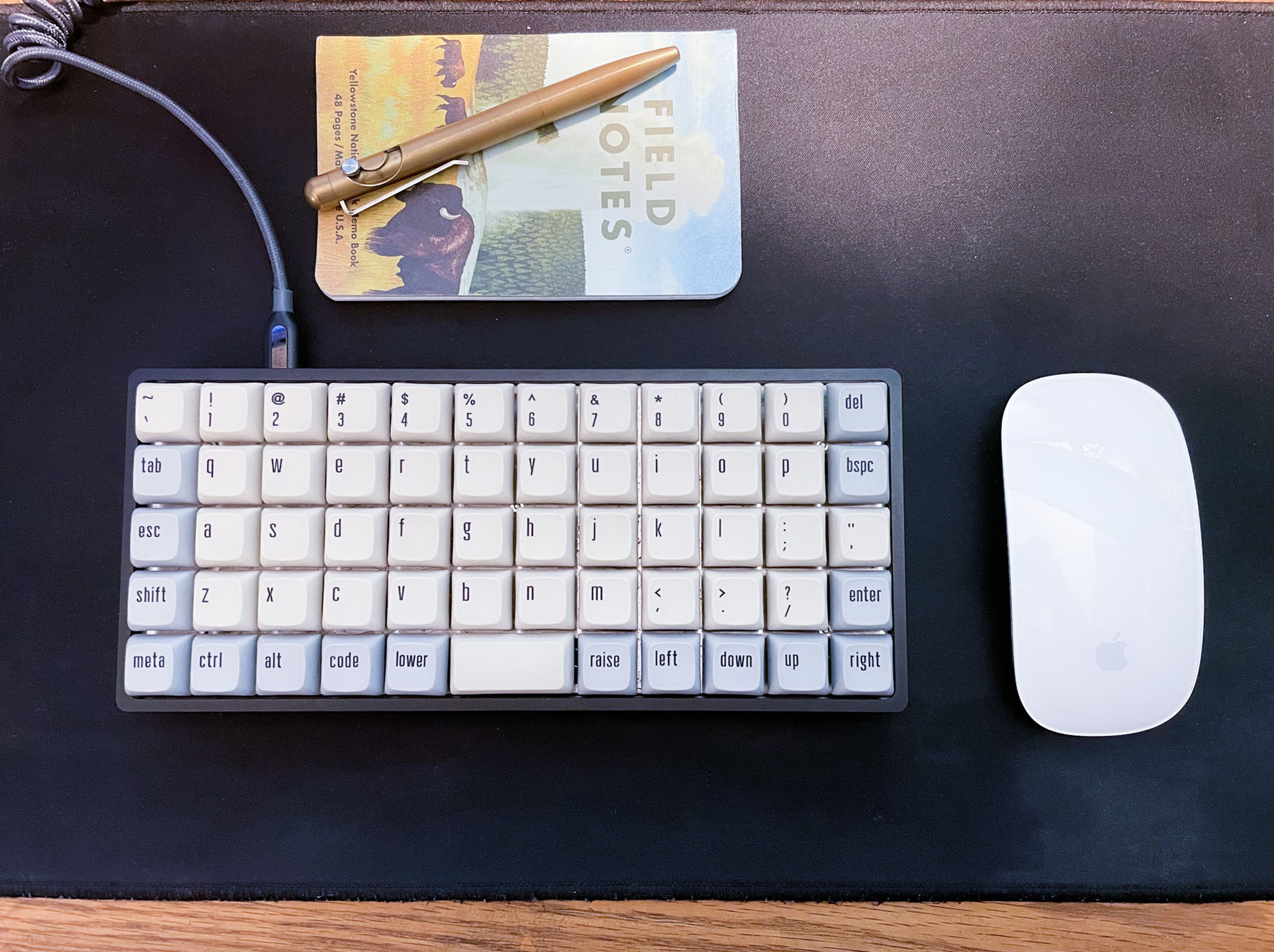
How to Choose the Right Ortho Keyboard for You
A keyboard is the most important tool in your arsenal, especially when you are typing for long periods of time. So it's important to choose a keyboard that will not only satisfy your needs but also do so in a cost effective manner. Fortunately, ortho keyboards are relatively inexpensive as compared to many of the other customizable keyboards out there.
Choosing the right keyboard is a personal decision. There are a number of considerations that factor in, such as aesthetics, ergonomics, and cost.
If portability is a concern for you, then this is a great option to take back and forth between the office and home or to travel with on business trips. I haven't had any issues flying domestically in the United States with it, and I plan on bringing it on more trips in the future.
The programmable feature of these keyboards is a great bonus and it's great to customize the keyboard the way you want. The default mappings for layers are great too and many people who use ortho keyboards use those perfectly fine if going in and changing every key isn't your style.
There are a plethora of keyboards to choose from and below are our recommendations for getting started. It can be a fun DIY project to assemble your own ortho keyboard, add your own switches, and program your own keymappings.
The Advantags of an Ortholinear Keyboard
Many ortholinear keyboards are designed to be small, compact keyboards in the ballpark of the 40% keyboard size. A 40% keyboard usually has around 40-50 keys give or take. With the smaller form factor on ortholinear keyboards, your fingers aren't more than two keys away from what is considered home row on most key keyboards. They are a favorite for those who want to carry their keyboard on the go. They take up less space on your desk and are subjectively more aesthetically pleasing compared to big honking full-size keyboards.
You're probably wondering, how am I supposed to type if I don't have all the keys that I need on the keyboard?!?! Smaller keyboards from 60 percent and down usually handle this either by using a dedicated function key. In the case of the Planck or Preonic keyboards, they utilize a layer system that changes the key mappings based on which layer you're on. If that sounds confusing, think of it as mapping a custom command to something like Ctrl+C. Ctrl-c does not type out "c" on the keyboard but actually executes the copy command on your computer.
Most ortholinear keyboards available allow you to fully customize your key mappings and can even play music if your keyboard has speakers! Most utilize VIA and open-source QMK firmware making easier than ever to setup your keyboard the way you like. You can program your own keyboard shortcuts with these and customize them however you want. This can be great if you never really used all the different keys on a full-size keyboard. You'll be able to have full control over your mappings. Never used the Page Up and Page Down keys? Change them to macro shortcuts for a commonly used program like photoshop or a video editor.
What Are the Disadvantages of Ortholinear Keyboards?
These keyboards are highly customizable as compared to traditional ones, and it takes a lot of time for people to get used to them. The grid-like pattern takes some time to get used to compared to the traditional keyboard staggered key layout. Of course, an ortholinear keyboard isn’t for everyone. Customization of keymappings inherently will take a good amount of upfront time to set up to your liking. However, you can find preset mappings online that you can edit to save your some time. If you like to customize your keyboard, the time investment might be worth it for you.
Keyboard Options
OLKB Planck & Preonic
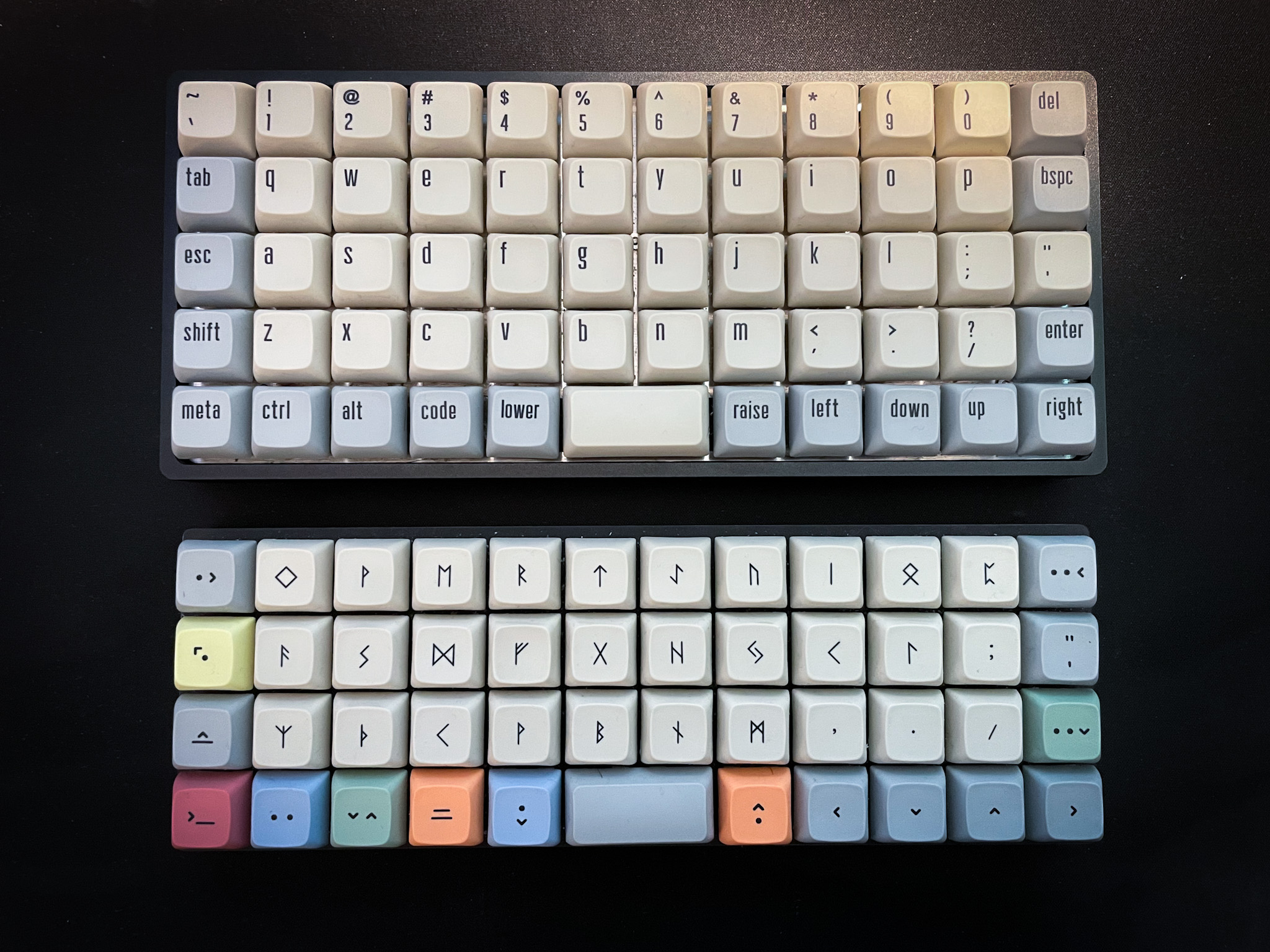
The most popular options are the OLKB Planck and Preonic keyboards which use customizable hot-swappable switches. They are also available online. You can order them right away with Drop or Amazon, so you don't have to wait for them to come back in stock. Assembly for this product should be easy, as the majority of the parts come pre-assembled. All you'll need is a screwdriver.
The Planck and Preonic offer a compact keyboard that frees up space on your desk, and allows you to work more efficiently when set up with your own macros. The grid layout and universal 1u size of each keycap on the Preonic and Planck keyboards allows you to map a key or command without worrying about hierarchy.
Learn MoreWork Louder: Creator Board
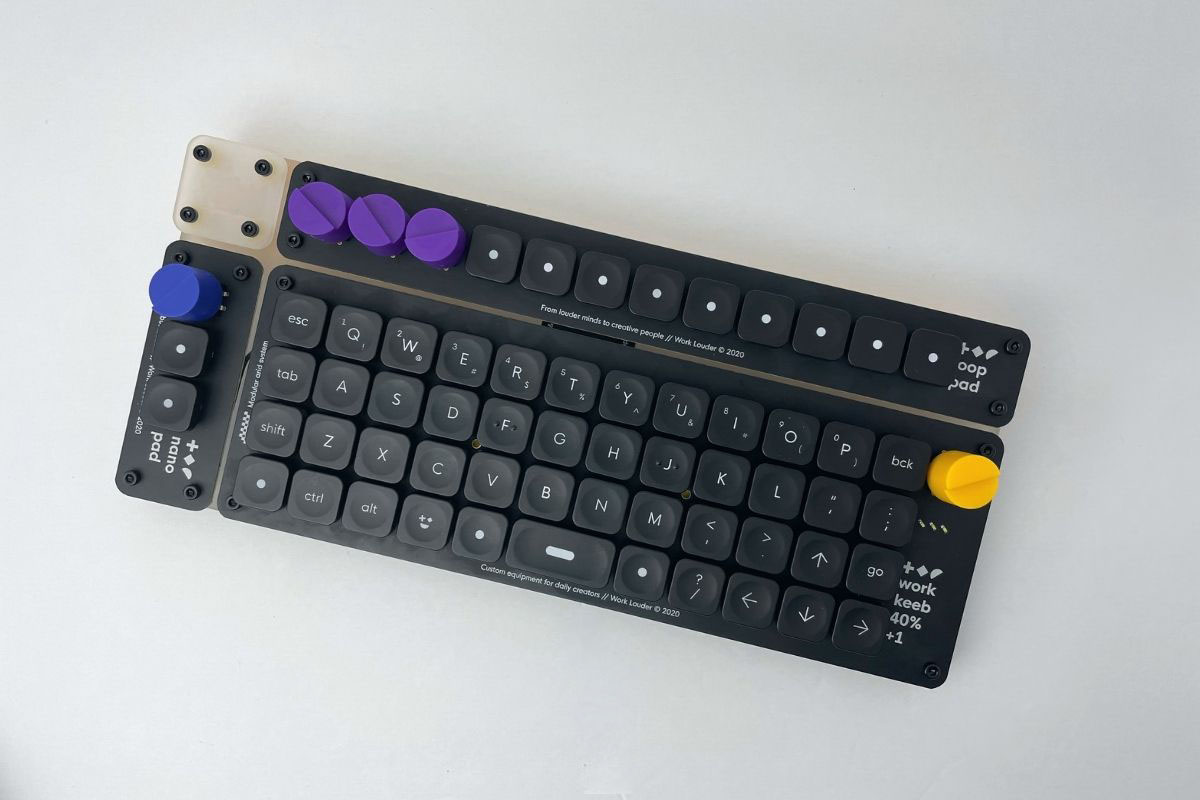
Chances are you've seen this ortholinear keyboard from Work Louder all over Instagram and TikTok. The Creator Board is an innovative modular design keyboard that can be configured to suit individual preferences. This is a customizable keyboard (customizable in terms of keys, orientation, modules, and size), which means you can create a personally tailored setup to fit your needs. Additional modules can be added with more customizable knobs and keys. There are currently only two modules, the Loop Pad and the Nano Pad, but additional modules are planned for the future.
Features:
- Cusomizable removable modules
- Up to 6 rotary knobs
- 236 programmable keys across 4 key layers
- VIA and QMK configurarable to customize all keys 60% layout
Other Keyboards
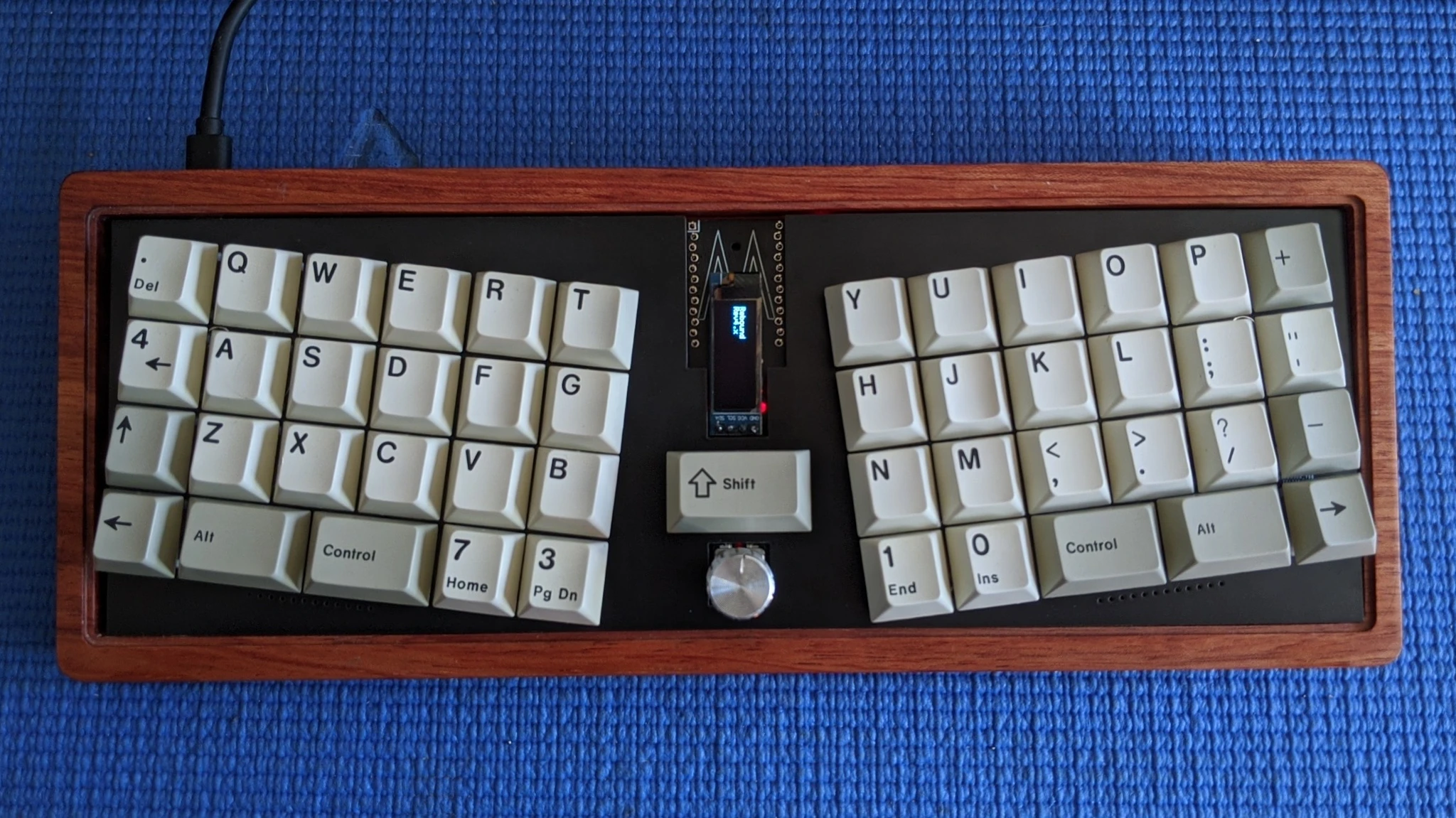
There are plenty of different ortholinear keyboards that offer different benefits and options. Some of different versions of the same 48-key layout as the Planck. Others offer better ergonomics in the form of a split keyboard which seperates the keyboard in half for better hand placement.
- Split Keyboards: Ergonomic
- ID75 Keyboard: A larger 75-key ortholinear
- Koolertron: Ortholinear Macro
Keycaps
Out of the ways to customize your keyboard, changing out your keycaps is probably the best way to show your personality. When I first brought my keyboard to the office, I had a lot of looks and questions on the blank DSA keycaps I put on my first Planck keyboard. I have since updated my keycaps a couple times and honestly it's pretty fun to change up the look every so often.
There are plethora of different types of keycaps with different typing profiles, legends and sizes. Luckily, for ortholinear keycaps - it's mostly pretty simple. There are many that offer kits specifically for ortho keyboards and below our some of our recommendations for all types of budgets.
Switches
Keyboard switches are what make your keyboard a keyboard. Arguably the most important pick in your keyboard setup, there are a plethora of different choices. However, the best pick are mechanical switches: linear, tactile, and clicky.
A tactile switch is one that uses a "tactile" bump feel to indicate when the key has been pressed. The bump also tells you that the key has been pressed and released, as opposed to a clicky switch which will only have an audible sound. The other type of switch is a linear switch, which has no bump and has a smooth keystroke throughout the press.
Luckily, you can purchase a switch tester to try out a set of different switches if you're agonizing over your decison. KBDFans offers tactile, clicky, and linear testers to choose from and many more.
Conclusion
Ortholinear keyboards are often overlooked because they don't fit the standard layout of most keyboards. But what makes them so great is that they can be customized to fit your needs and be as compact as possible with no wasted space. This also means ortholinear keyboards are lightweight and easy to transport, making them the ideal solution for anyone who spends a lot of time traveling.
The ortholinear keyboard is a great option for people who want a more efficient way to type or who are looking for a portable keyboard that they can customize.
40% Keyboards are Small but Powerful
A majority of the ortholinear keyboards options are around the 40% size and for good reason. 40% keyboards are small and powerful little keyboards that are portable and minimal. As opposed to "100%" keyboards with a full layout and number pad, 40% keyboards usually only have the set of alphas and a handful of modifier keys around them. Because of this, 40 percent keyboards heavily rely on programmability and shortcuts. Very few people use all the functionality of a full 100% keyboard, let alone have a need for the built-in functions there.
Are they "Ergonomic"?
A small ortholinear keyboard layout in combination with the layer system greatly reduces the need for stretching your fingers more than a single row away from homerow. The reduced finger travel might be something that you're interested in but it doesn't necessarily mean it is ergonomic or will relieve any pain you experience typing. In that case, you may need to look into split keyboards options which literally split the keyboard in half to help you adjust the keyboard to better adjust wrist angle for comfort.
Ortholinear keyboards weren't meant to be designed to fix ulnar deviation or wrist problems. If typing on an ortholinear keyboard (or any keyboard) is causing you pain, stop using it! Consult your doctor if you are experiencing pain when typing.
Videos
Read Our Blog
Catch up on our blog for the latest guides & news for all your ortholinear keyboard needs!
Learn More